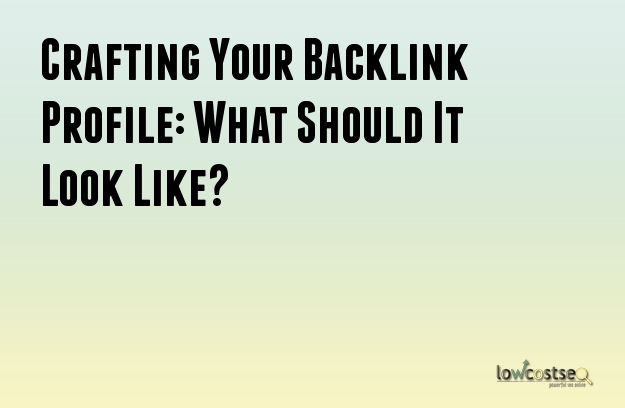
The nature of links has always been a hotly debated – and ultimately, always necessary – part of SEO. Google has always appreciated backlinks, although the way in which it appreciates them has certainly changed.
Mostly, this has been shift towards quality over quantity. Many older tactics simply don’t work, or fall into black hat territory, as a result, with SEO agencies adopting more marketing methods to directly create content that’s appealing and worthy of gaining links. In short, it needs to hold value in both Google’s eyes and the readers.
So, with this in mind, what should you be aiming for in terms of your link output? Once you start looking into it, you’ll find there’s more than just the link that matters...
Your Content Matters
“Unique content is important”. This is a message heard on every SEO-related article, website or event. We know – but it really is important.
Furthermore, Google is getting increasingly more aware of what your content is about, so it’s almost impossible to develop link strategies that don’t carry resonance. If you’re trying to get links on for “shoe buying guide” but our linking to a commercial page, search algorithms will catch on.
In fact, when it comes to guides and “how to” advice, one factor that keeps cropping up is the length and depth of your content. In their study of blog post length, Snapagency found that content between 2,250 and 2,500 words got the most organic traffic.
Of course, this isn’t keyword stuffing, either. The content needs to be relevant and Google, with semantic search and other advanced methods, can easily sniff out unoriginal, shallow content and devalue it appropriately. Even if you get into the top 10 in the SERPs, uninteresting content – or something that just isn’t useful for the query – will result in high bounce rates and poor engagement figures that search engines will pick up on.
Separate Mobile and Desktop
There’s a big difference in how users interact based on their device. Mobile users are typically on the move. They either want quick content that meets their demands, or their looking for local based searches.
If you don’t separate by device and target appropriately (or simply favour on over the other, depending on your business), your links will become less effective. This is because the differences are growing – and at a rapid pace.
Research from Brian Wood and Wayfair concluded that, between 2015 and 2017, desktop click through rates for page 1 (top 10) search results declined by 25% - but mobile rates dropped by 55%!
Why is this happening? It’s possible that paid adverts, which take up much of the above-fold real estate on mobile screens, represent the quickest and easiest solution. This is especially true when local businesses and services are concerned. Combined with the likes of Maps, it’s clear that organic traffic isn’t always even a priority.
If you find this is the case for you, try focusing your backlinks onto pages preferred by desktop users and switch your PPC campaign to more heavily target mobile users instead.
In fact, we can even show you this. As Edwords was observed, the space paid content takes up has been growing over the years, pushing organic results further down.
http://www.edwords.nl/wp-content/uploads/2014/04/Google-ads-2010-20141-e1398431608335.png
Low Hanging Fruit = Less Links
While Google appreciates quantity, quality ultimately counts for something. If you’re trying to compete in a keyword niche dominated by long-standing platforms, with numerous backlinks from strong, authoritative domains, you would have to do a lot of work to get close to their position in the SERPs.
Far better, then – as far as getting traffic and online visibility – to target some lower hanging fruits.
In one such strategy from Andrew Dennis at Siege Media, increases traffic by over 300% year-on-year by targeting more “linkable” opportunities, creating new content (and adapting older material) to target theses specific queries.
https://searchengineland.com/figz/wp-content/seloads/2017/09/Traffic-Graph-4-anonymized-800x295.png
Does Quantity Still Matter?
Okay, so there are plenty of arguments for carefully choosing your keywords, ensuring strong domain authority, relevant content at al. But, do you still need lots of links?
This research suggests that, in many cases, less is more. Over 70% of SEO experts claimed they build no more 20 new links a month.
https://cdn.searchenginejournal.com/wp-content/uploads/2017/09/sej-diagramm-2-1600x840.png
Clearly, a focus on quality can be argued here. In fact, the same research found that only 5% said they had backlink penalties in the last 12 months, with the vast majority (80.1%) haven’t experienced any difficulties.
https://www.link-assistant.com/images/news/link-building-survey-2017/screen-06.png?ver=2
Of course, this is just comparing two data sets and drawing the most obvious conclusion. You also have to consider how many different landing pages or keywords are being targeted.
Thanks to a growing focus on semantic search (at least in Google), it’s safe to say – or at least recommended – that you should focus on a small set of high quality landing pages, focusing on the direct queries that they answer. If you’ve got too many broad pages out there, it’s time to optimise your website structure and focus your link equity.
